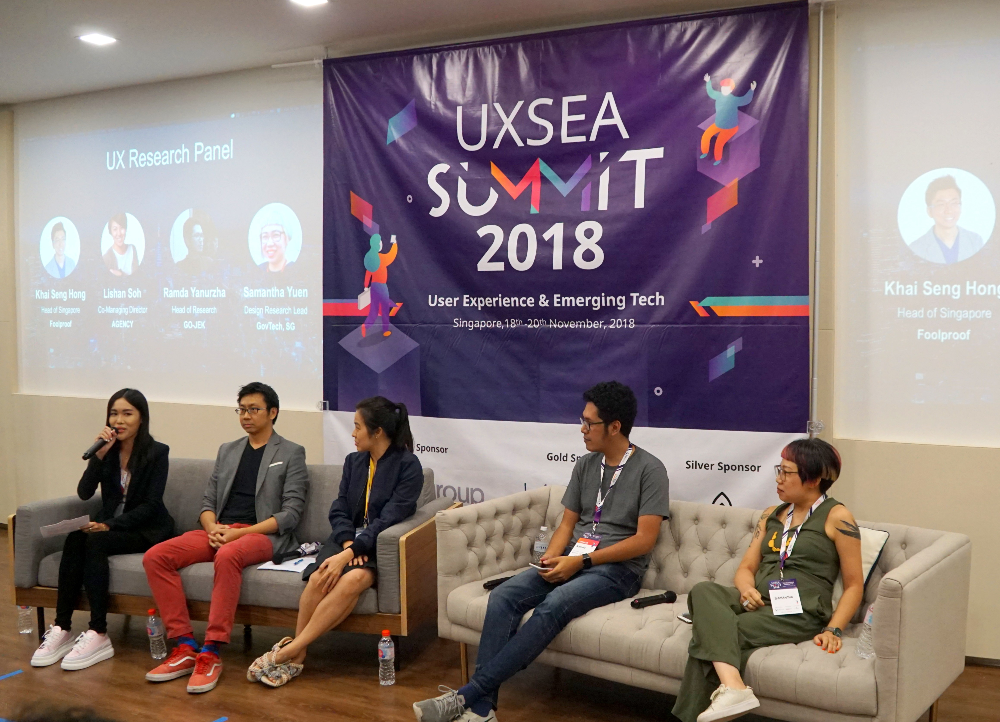UX Research: Bringing the voice of the customer into the boardroom

TL:DR: To deliver greater value to their customers, companies are increasingly focused on improving user experience (UX). At the UXSEA Summit 2018, panellists outlined their approaches to carrying out productive UX research. Keen observation, researcher objectivity and team diversity will help businesses put themselves in their customers’ shoes, said the panellists.
Think about the last time you attempted to pour tomato ketchup from a glass bottle. More likely than not, you gripped the bottleneck and smacked the bottom of the bottle until the red viscous liquid splattered unceremoniously onto your food. Had the ketchup been placed in a squeezable bottle instead, your user experience (UX) of getting that dose of tomato-filled goodness might have been more pleasant.
US food processing company Heinz learnt through its UX research that the glass bottle was, in fact, an impediment to children obtaining ketchup on their own. By producing an ‘EZ Squirt’ bottle, Heinz managed to raise consumption of its ketchup by as much as 12 percent—an example of how companies can profit by paying attention to how users interact with their products.
At the UXSEA Summit 2018, experts shared their insights into UX research and its impact on the public and private sector. Moderated by Ms Priscilla Nu, head of design at SP Group, the panel comprised Mr Khai Seng Hong, head of UX design agency Foolproof’s Singapore office; Ms Soh Lishan, co-managing director of design firm AGENCY; Mr Ramda Yanurzha, head of research at ride-hailing platform Go-Jek; and Ms Samantha Yuen, design research lead at the Government Technology Agency of Singapore (GovTech).

Watching and learning
“UX research done well has the power to shape strategy. Our role [as UX researchers] is to bring the voice of the customer to the boardroom,” said Ms Soh.
This is easier said than done—to capture the diverse views and perspectives of customers, the right research methodology must be applied. Asked about their preferred approaches to UX research, the panellists described techniques borrowed from ethnography—the systematic study of people and their behaviours, habits and cultures.
Common to these techniques is the element of observation. For example, to improve the usability of a ketchup bottle, UX researchers from Heinz sat in on family meals to watch interactions among family members; they concluded that children depended on their parents to obtain ketchup from a glass bottle.
While aloof observation may work in some circumstances, a deeper understanding of UX can be gleaned when the observer performs a task alongside research participants, Mr Khai recommended.
“When you physically carry out the task [with participants] … it gives you clues as to why your reality is different from the user’s reality, and you can focus your curiosity on that,” he said.
Going local
Given Southeast Asia’s diversity, Ms Yuen highlighted two crucial ‘hacks’ to carry out good UX research—immerse yourself into the local culture, and hire a good translator.
“How things are done in Indonesia is very different from how things are done in Thailand, and so, it’s important to understand the culture of the people you work with,” she said.
Mr Yanurzha agreed, adding that Go-Jek’s strategy when entering a new market is to “hire the most local guy we can find”. Go-Jek also gets their UX researchers to ply local roads.
For translation, Ms Yuen recommended hiring a simultaneous translator—someone who can translate someone’s words or thoughts while the person is still speaking. This will avoid any paraphrasing or summarising during translation, which could affect the interpretation of research participants’ feedback.
Finally, the panellists emphasised the need to maintain objectivity during UX research. The main hindrance to objectivity is the researchers’ own biases and assumptions, said Mr Yanurzha, and these can be countered by having diversity on the research team.
“For example, our team has architects, interactions designers, product designers and engineers,” said Ms Soh. “The way [each member] processes information is very different and can be very insightful.”
https://www.tech.gov.sg/media/technews/ux-research-bringing-the-voice-of-the-customer-into-the-boardroom
